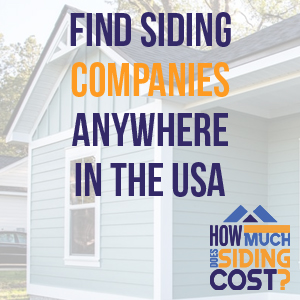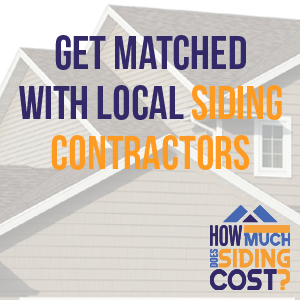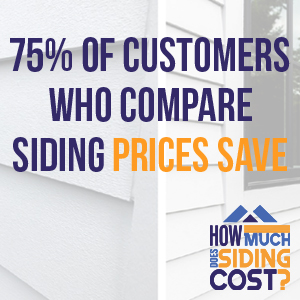
The Pros and Cons of Fiber Cement Siding
In the realm of home improvement, choosing the right siding material is more than a matter of aesthetics; it’s a decision that impacts the durability, maintenance, and overall value of your property. Among the myriad options available, fiber cement siding stands out as a choice that marries durability with design versatility. Known for its robustness against the elements and its ability to mimic the look of more traditional materials, fiber cement siding has become a popular choice for homeowners considering siding replacement. Let’s dive into the world of fiber cement siding, exploring the advantages and challenges it presents. From its environmental credentials to its installation demands, we’ll provide a comprehensive overview to help you determine if fiber cement siding is the right choice for your next home siding project.
What is Fiber Cement Siding?
Fiber cement siding is a robust building material composed of cement, sand, and cellulose fibers. This unique composition endows it with unmatched strength and versatility, making it an excellent choice for residential and commercial siding applications. Its manufacturing process involves combining the raw materials under high heat and pressure to create a dense, durable product. Available in a variety of textures, colors, and styles, fiber cement siding can emulate the appearance of wood, stucco, or masonry, providing homeowners with a plethora of design options to enhance their property’s curb appeal.

Pros of Fiber Cement Siding
Durability and Longevity
One of the most compelling advantages of fiber cement siding is its resilience. Designed to withstand the ravages of time and nature, it resists common siding enemies like rot, pests, and fire, promising a lifespan that can exceed 50 years with proper installation and minimal maintenance.
Aesthetic Versatility
Fiber cement siding’s ability to mimic other materials allows homeowners to achieve their desired look without the inherent drawbacks of those materials. Whether you’re aiming for the rustic charm of wood without the susceptibility to termites and decay, or the sleek appearance of stucco without the risk of cracking, fiber cement offers a practical and attractive alternative.
Low Maintenance
Compared to traditional wood siding, fiber cement requires significantly less upkeep. It stands up well to harsh weather conditions, resists fading from UV exposure, and generally only needs repainting every 15 to 20 years—far less frequently than wood.
Environmentally Friendly
Fiber cement siding is often praised for its environmental benefits. The durability and longevity of the material mean less frequent replacements, reducing waste. Additionally, some manufacturers incorporate recycled materials into their production processes, further enhancing its eco-friendly profile.
Value Addition
Investing in fiber cement siding can enhance your home’s market value. Its durability, aesthetic appeal, and low maintenance requirements make it an attractive feature for potential buyers, potentially offering a strong return on investment.

Cons of Fiber Cement Siding
Installation Challenges
Installing fiber cement siding is not a DIY-friendly project. It requires specialized cutting tools to manage the material’s density and dust control measures to protect installers’ health. This complexity often translates into higher labor costs and a longer installation timeframe.
Upfront Costs
While fiber cement siding offers long-term savings due to its durability and low maintenance, the initial investment can be higher than other siding options. When budgeting for siding replacement, homeowners should consider both the material and installation costs.
Weight
Fiber cement siding is heavier than many other siding materials, which can complicate its transportation and installation. In some cases, the structure of the home may need reinforcement to support the additional weight, potentially adding to the project’s cost.
Maintenance Over Time
Despite its low maintenance profile, fiber cement siding is not entirely maintenance-free. It may require periodic caulking and painting to maintain its appearance and integrity, especially in climates with extreme weather conditions.
Limited Insulation
On its own, fiber cement siding does not offer significant insulative properties. Homeowners looking to improve energy efficiency may need to invest in additional insulation, impacting the overall project cost.

The Cost of Fiber Cement Siding
Fiber cement siding is praised for its durability, aesthetic versatility, and low maintenance requirements, but these benefits come at a cost. On average, homeowners can expect to spend between $5 and $15 per square foot installed for fiber cement siding. This price range varies based on factors such as the brand of siding, the complexity of the installation project, geographic location, and the finish and style chosen. For a typical home, this translates into an overall project cost ranging from $8,500 to $20,000, with most homeowners spending around $14,000 for a complete siding replacement.
These costs include materials and professional installation. Fiber cement siding requires specific tools and expertise for cutting and installing, contributing to the higher end of labor costs compared to some other siding materials. Additionally, the weight of fiber cement siding can affect transportation and handling costs during the installation process.
Comparison to Other Types of Siding
To put the cost of fiber cement siding into perspective, let’s compare it with the average costs of other popular siding materials:
- Vinyl Siding: Vinyl siding is among the most cost-effective options, with average costs ranging from $3 to $8 per square foot installed. While it offers the benefits of low maintenance and a wide range of color options, it doesn’t match the durability or aesthetic versatility of fiber cement siding.
- Wood Siding: The cost for wood siding varies widely depending on the type of wood, but it generally ranges from $6 to $12 per square foot installed. Wood siding offers a natural look and can be painted or stained to suit various styles. However, it requires more maintenance than fiber cement and is susceptible to rot, pests, and fire.
- Stucco Siding: Stucco siding costs approximately $6 to $9 per square foot installed, making it comparable to fiber cement in terms of cost. Stucco provides a unique texture and is durable, but it can crack over time and may not be suitable for all climates.
- Brick and Stone Veneer: These materials are on the higher end of the cost spectrum, with average prices ranging from $10 to $30 per square foot installed. Brick and stone offer unparalleled durability and a timeless aesthetic but come at a significant cost.
- Metal Siding: Costs for metal siding, which includes aluminum and steel options, range from $5 to $12 per square foot installed. Metal siding is durable and low maintenance, with good fire resistance, but may not offer the same level of aesthetic versatility as fiber cement.

When considering the cost of fiber cement siding, it’s important to weigh the long-term benefits against the initial investment. While fiber cement may have a higher upfront cost compared to vinyl or certain types of wood siding, its durability, low maintenance requirements, and aesthetic flexibility offer significant value over time. Compared to higher-end materials like brick, stone, and some metal sidings, fiber cement provides a cost-effective alternative that doesn’t compromise on performance or appearance.
Ultimately, the choice of siding material should align with your budget, aesthetic preferences, maintenance willingness, and long-term home improvement goals. Consulting with professional siding contractors can provide tailored advice and more precise cost estimates based on your specific project, helping to ensure that your siding investment enhances your home’s value, beauty, and functionality for years to come.
Making the Decision for Your Home
Choosing the right siding material is a significant decision that affects your home’s aesthetic, efficiency, and resilience. Fiber cement siding offers a compelling blend of durability, versatility, and beauty, making it an excellent choice for many homeowners. However, its installation and maintenance requirements, along with the initial investment, are important considerations.
When evaluating whether fiber cement siding is suitable for your project, consider consulting with experienced siding professionals. They can provide valuable insights into the material’s performance in your specific climate and help you weigh its long-term benefits against upfront costs.
Fiber cement siding stands as a testament to innovation in building materials, offering homeowners a durable, versatile, and attractive option for siding replacement. While the decision to choose fiber cement siding will depend on individual preferences, budget considerations, and specific home needs, its benefits are undeniable. By carefully considering the pros and cons outlined in this guide, homeowners can make an informed choice that aligns with their long-term home maintenance and aesthetic goals. Embracing fiber cement siding means investing in the future of your home, ensuring it remains beautiful, resilient, and valuable for years to come.
